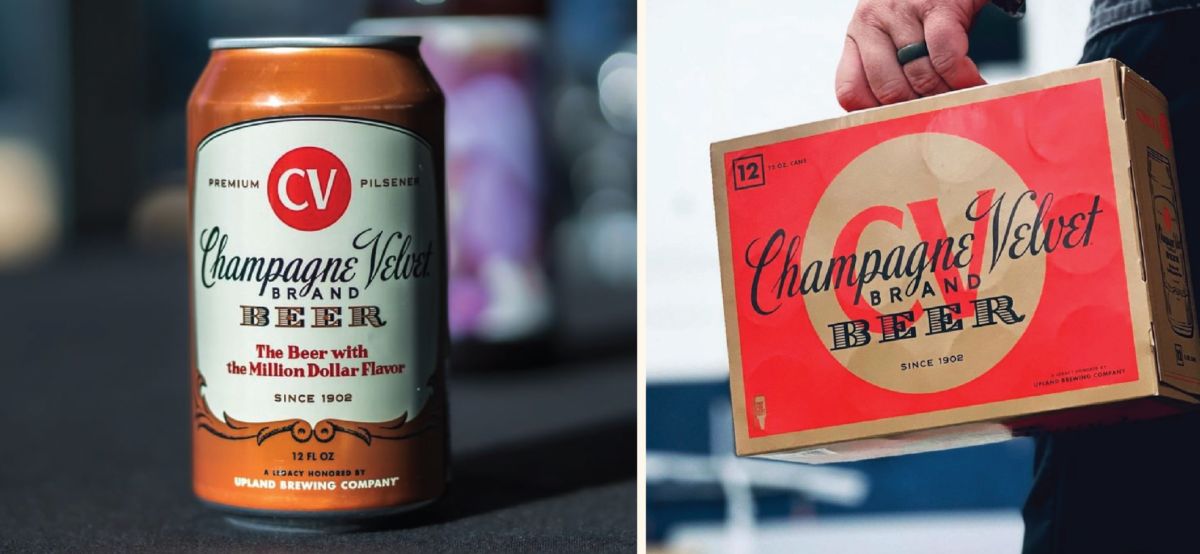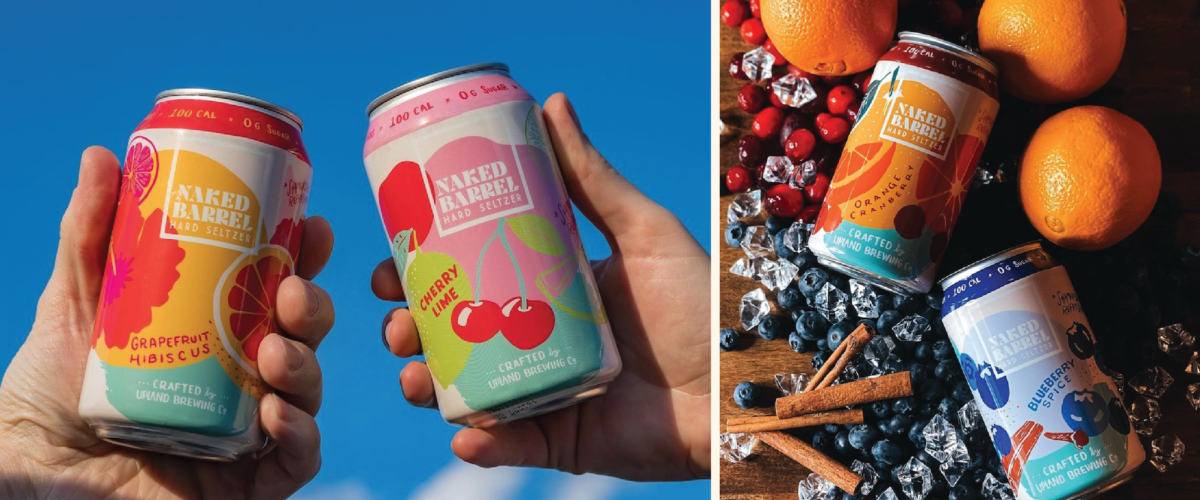Resources
Talking Shop with Upland Brewing
Brand building, doubling down on tap room experiences + reviving a legacy IP beer brand
Upland Brewing is an OG Indiana craft brewery. Some of my earliest craft beer experiences (~2008) were employing early pours of Dragonfly IPA and Bad Elmer’s Porter. That was ~15 years ago (by which point Upland had already been open for 10 or so years). So I’ve been a fan for many years and find myself rooting for storied outfits like these the older I get.
I’m also a fan of Upland’s previous CEO, David Bower (he left Upland shortly after we originally put this piece together).
I’ve had the pleasure of grabbing beers with David to talk shop and presenting alongside him on a few different panels at brewers conferences over the years and find his perspective on what it takes to build a regional brewery brand on point.
We cover a lot of ground here. Let’s dive right in and see what David has to say about the current state of the craft beer industry.
*Note: Shortly after this interview, David left his role as CEO of Upland


Hi David. Please introduce yourself and give us a run down on Upland Brewing. How (and when) was the brewery founded, what kind of beers do you brew, annual production, distribution footprint, etc.?
 David
David
Hi, I’m David Bower, President & CEO of Upland Brewing Co. Upland was founded in 1998 in Bloomington, Indiana—and our name and logo refer to this uniquely hilly part of Southern Indiana. We have three breweries, our main 37bbl production brewery, a wood-aged sours specific brewery called the “Wood Shop” replete with foeders and barrels galore, and a small 7bbl pilot brewery at our Fountain Square location used for developing new recipes.

We’ll get into this in more detail in later questions, but for now, what are some important shifts you see with Upland coming out of COVID? And how will this shake out across the rest of the craft beer industry?
 David
David
Two main areas of focus: Firstly, getting smarter about aligning with retailer and wholesaler needs & priorities by streamlining our approach to market down to a handful of critical releases and associated market support programs. We’re absorbing the burden of the trial and error of innovation within our own brewpubs and exercising the discipline to ensure our wholesale program is always ready for prime time. Secondly, is a refocus on the on-premise. As we all begin to spend more time and money at bars and restaurants, it’s important that Upland regains its share. We’re preparing for an even more competitive arena — as packaging costs rise, keg sales will become even more important for brewers.

How has Upland’s flagship portfolio evolved over the years?
 David
David
Like a lot of breweries born from the 90s, the opening lineup was a broad representation of classic styles. Over time, we have honed our craft toward the nexus of what we do uniquely well, what we enjoy doing, and what our customers want. Enter the sours program in particular, and the overall influence of barrel aging on the entire portfolio and the playful-and-sometimes-iconoclastic approach to building flavor.

Upland recently released Naked Barrel Hard Seltzer. What was your thinking around how to position this within your portfolio? Without getting too in the weeds, you launched Naked Barrel as an endorsed brand (e.g., Naked Barrel Hard Seltzer, crafted by Upland Brewing). Why not make it a straight brand extension OR create an entirely new brand?
 David
David
After much ideation and iteration, we decided that we wanted Naked Barrel to reside on Planet Upland via endorsement, but to be freed of some of the consumer expectations potentially associated with a line extension. This would allow both the flagship program and the naked barrel program to remain focused on their specific target demographics without diluting each other–force feeding a better-for-you blended hard seltzer into the Dragonfly IPA story or vice versa.


Build a stronger brand.
Sell more beer.
Join 7,500+ other beer industry folks and sign up for CODO’s monthly Beer Branding Trends Newsletter.

Beer Branding Trends 2.0

We speak to several breweries around the country a month who are considering a seltzer extension. Through these conversations, I’ve often stolen your line from our 2021 trends piece: “It’s not simply a choice of turning on the seltzer money faucet.” We still see this misconception that all a brewery must do to be successful in this space is bring a seltzer to market. Then, it’s all profit(!). Please tell me (and the reader) why this is the wrong mindset.
 David
David
Everything seems easy when you don’t know the details! Brand building takes time, even in a “hot” space. Today’s seltzer headlines are mostly written about brands who got to market early and battled it out for years on their way to pole position. The consumer appetite for trial & constant variety can provide the short-term illusion of success. Going from zero-to-X is the easy part as retailers are quick to award temporary features to the new-and-exciting but cycling those numbers the following year will more accurately demonstrate brand health. It takes a whole lot of grit and humility.

Is a brewery that can make the leap—create a differentiated product and support it with branding, marketing and sales dollars—crazy for not investing in an RTD and/or hard seltzer extension right now?
 David
David
Not at all. It’s more important to first identify what you do well as a company and do as much of that as possible. If that happens to include ingredient innovation and beyond beer-type products, then great! If not, it might be time to heed the immortal words of Dr. Ian Malcom, “[they] were so preoccupied with whether or not they could, they didn’t stop to think if they should.”

What role do variety packs play in Upland’s product mix? Are they a pivotal offering, or a nice-to-have?
 David
David
For many breweries, a variety pack is a critical offering—a standard package enormously accelerated by covid-era pantry loading and desire to satisfy the trial and sampling previously explored in the on-premise within one’s home bar. Our core variety pack has consistently been our #3 SKU by volume over the past few years, only surpassed by Dragonfly IPA 6 and 12pks. It’s a labor of love (and hate) as many breweries don’t have the automation resources needed to efficiently make variety packs, adding more cost every time a human sorts & stacks the boxes. Despite these challenges, we are invested in that package, and are releasing a second year-round hoppy variety this year called “Hop Mix” with a fun music theme (Turn up the Hops, Get it?)


Upland has several brick-and-mortar locations across Indiana. Has COVID shifted how you view future own-premise opportunities or are you still bullish on that when the right opportunity comes up?
 David
David
Anyone in the hospitality business knows that it is, and always has been, very hard work that is subject to the insecurity of many shifting tides (both on the micro and macro level). We are still bullish, partly because we’re crazy enough to still enjoy it. That being said, we are extremely careful about pursuing new opportunities as timing is critical–as is maintaining harmony among all of our other strategies and business units. We started as a brewpub in 1998, and it’s still an important part of our brand identity and experience.

How do you view the on-premise channel overall as we make our way past the pandemic? Do you see this leveling out to somewhere near where we were before COVID-19, or is Upland going to focus more on packaged beer, extensions and off-premise sales in general?
 David
David
I still strongly believe that on-premise is an important channel. In 2021, consolidated Indiana on-prem volumes were purportedly about 85% of 2019 volumes, and I expect that figure to continue to rise incrementally. If anyone thinks on-premise is dead, they may just be looking at their own declining share as a result of covid retrenchment and shifting payroll dollars to off-premise key account managers and the like. Off-premise is still hugely important for us, and always will be a focus, but due to its inherent limitations regarding sampling, events, and breadth of stylistic representation, on-premise is needed for holistic brand building.

Upland acquired the Intellectual Property (IP) for Champagne Velvet several years ago and reintroduced it throughout your market. I’ve loved this move (and the beer itself) ever since and have wanted to talk to you about it for years. Two questions:
A. What role did Champagne Velvet fill in the Upland portfolio? What was missing at the time you launched this brand?
B. Here’s a late night, campfire conversation I’ve had with my team a few times. Are there any cool regional brands around today that will close, only to be revived 50 years from now? Or, since you probably can’t publicly answer that, what do you think a brand needs to have (what immutable qualities) that makes it viable for this sort of rebirth? (Beyond a driving cultural zeitgeist that fetishizes vintage aesthetics and brands in the first place).
 David
David
Great questions. We are very proud caretakers of the Champagne Velvet brand and have enjoyed its position within our core stable for a number of years. It is now our number #2 brand by volume and our most popular core beer in nearly all markets outside of Indiana (Chicago is a prime example of this). CV filled this interesting void in the portfolio as a brand that is nearly transcendent in terroir & time—a brand perpetuated by generational lore (so & so’s grandpa’s first beer) and antique store breweriana. In many ways, this provided a vehicle to lift the entire portfolio out of the hills of Southern Indiana and into some exciting new territories.
If using Champagne Velvet as a blueprint, a brand worthy of rebirth needs to be both timeless and of its time – something nostalgic without feeling dated. The beer style and recipe need to be classic enough to remain evergreen in the midst of changing trends. I also think it is critical for the brand to exemplify Good Design, and you can find this kind of aesthetic expression in furniture, sign making, architecture – there are certain elements that always work. Interestingly, Champagne Velvet design has changed many times throughout the years while remaining instantly recognizable, a testament to the strength of its core design principles. Finally, it needs a good story (even if slightly fabled).

Craft beer is in this interesting cyclical phase where some of the most famous names in the game are producing hard seltzer and light lagers (things that would’ve been viewed as sacrilege in the not-so-distant past). I’m making no value judgement on this myself, but I’d love to get your opinion on craft and what, if anything that word means anymore? Was it a buzzword all along, destined to be co-opted and watered down by Big Beer, or was it ever actually a true line in the sand?
 David
David
Call me old school, but I still believe in the original craft ethos. After all, the fact that Blink 182 exists doesn’t make the Sex Pistols any less punk, right? Craft emerged as a means to serve an underserved community and regain some authenticity in our beer drinking rituals. Thousands of breweries later, everything is forced to change after that underserved community got a little over-served. Chasing differentiation can lead to some strange wardrobe changes. If we disabuse ourselves of the correlation between craft and overnight successes, infinite scalability, and instantly sparking cigar-igniting levels of shareholder value, then little has changed from a certain perspective, only matured. The old dogs are aging out of some of their trend setting ways and adopting the comfort of mainstream tactics, making room for a new generation of innovators and entrepreneurs.

Follow-up question: does provenance matter to the hard seltzer consumer? How did your team think about this during the Naked Barrel project?
 David
David
We actually spent a lot of time thinking about this. For us, the blend of wood-aged sour ale with the naturally fermented, real-fruited seltzer base created that designation of origin, our Wood Shop. Many aspiring seltzer magnates begin-and-end with the brand and neglect the 12 fluid ounces found within. We wanted to make something real. I think the seltzer consumer is divided on this topic. For some of today’s youths, I believe their seltzer choices are driven by CPG dada-ism, a complete and deliberate disregard to all the fussy bits that define the dad-beer they are running away from.


Do you have any book / podcast / newsletter recommendations that beer industry folks should check out?
 David
David
Everyone should read Thinking, Fast and Slow by Daniel Kahneman. It only pertains to beer in the sense that it is about everything, but I find it endlessly inspiring and has shaped my thinking over the past few years. Friends and relatives have told me it ain’t exactly easy reading, but don’t let that stop you.

Beyond those, how do you stay sharp and up to date on emergent trends within craft beer?
 David
David
I try to maintain a balanced diet of data and anecdotes. Some unholy combination of IRI reports, bone dry white papers, and market analyses balanced with firsthand guest feedback and that guy at the end of the bar who wants to tell me about the amazing brown ale that we made 15 years ago that we should definitely make again because he’d drink it all the time and tell his friends. However you slice it, don’t forget that all data comes from the past.

If you had unlimited budget, what would you do / buy / invest in over the next year?
 David
David
I would absolutely invest in talent. All the shiny new widgets in the world are only as good as the operators. You can stockpile painted cans, buy automation, and hire influencers, but you’re only as good as the people who support your dream. Also, I’m tired and want to go on a vacation, and it would be real cool to have someone answer my emails while I’m gone.

Thanks so much for your time, David. This has been great!
 David
David
Thank you! Always a pleasure!

Build a stronger brand.
Sell more beer.
Join 7,500+ other beer industry folks and sign up for CODO’s monthly Beer Branding Trends Newsletter.
